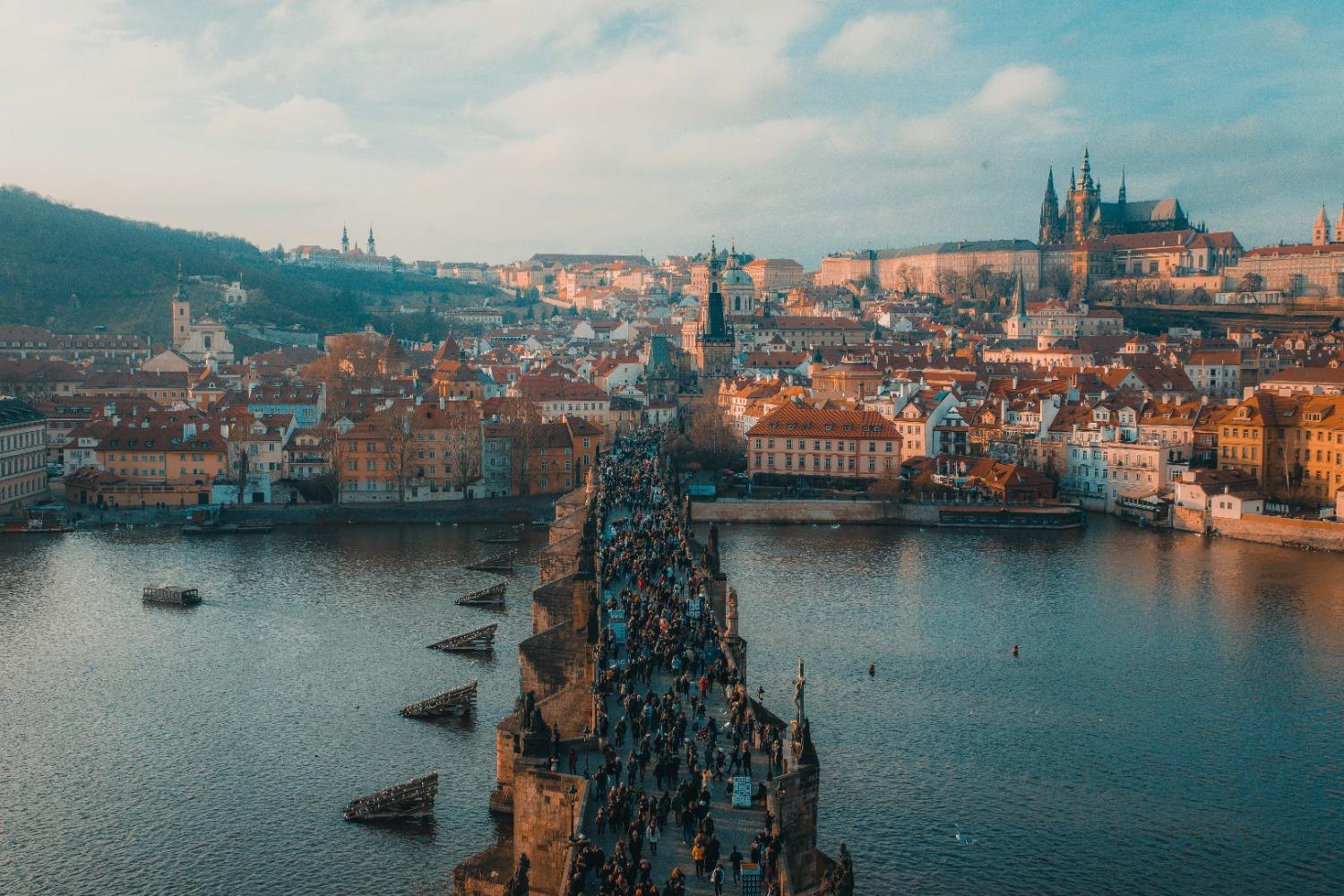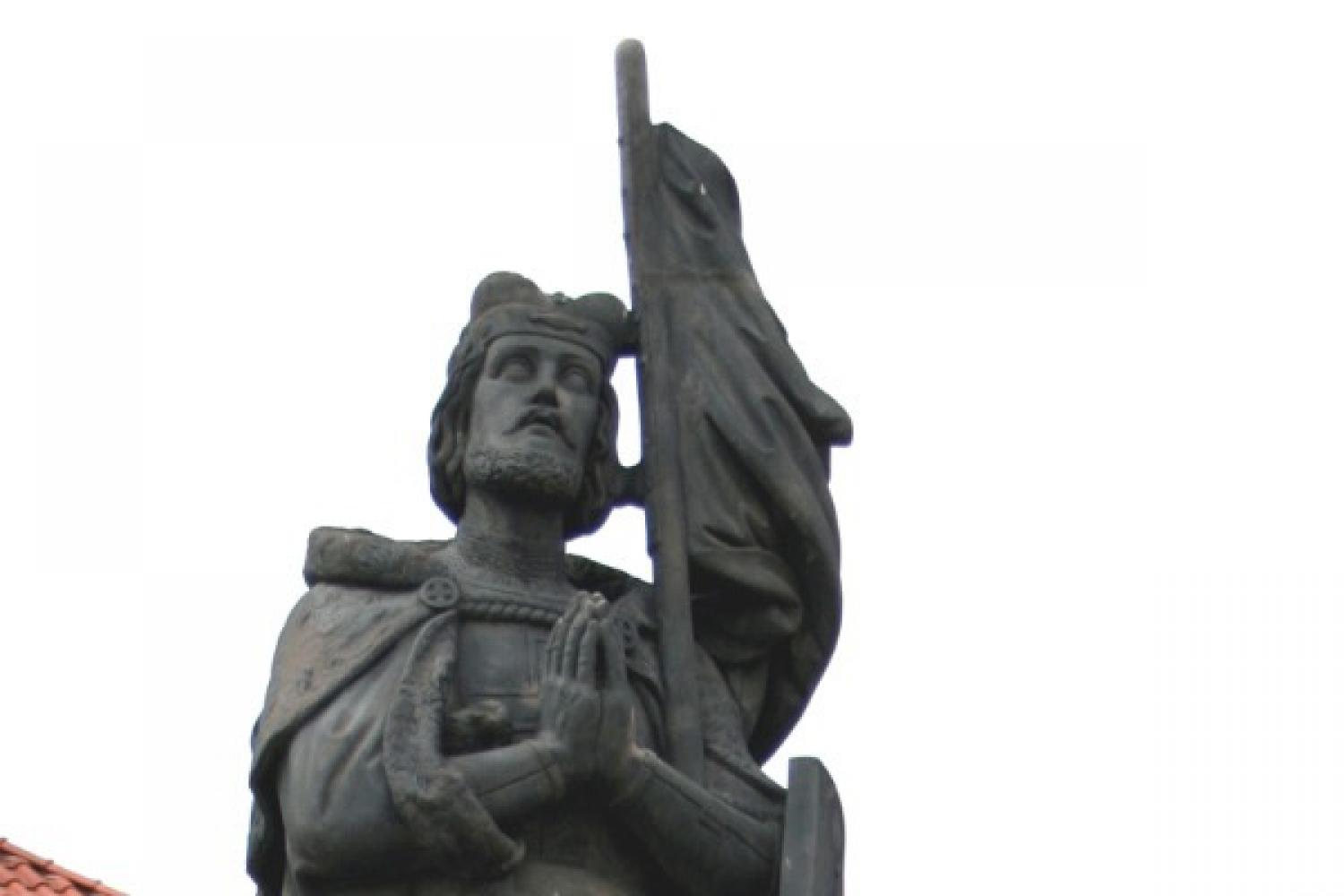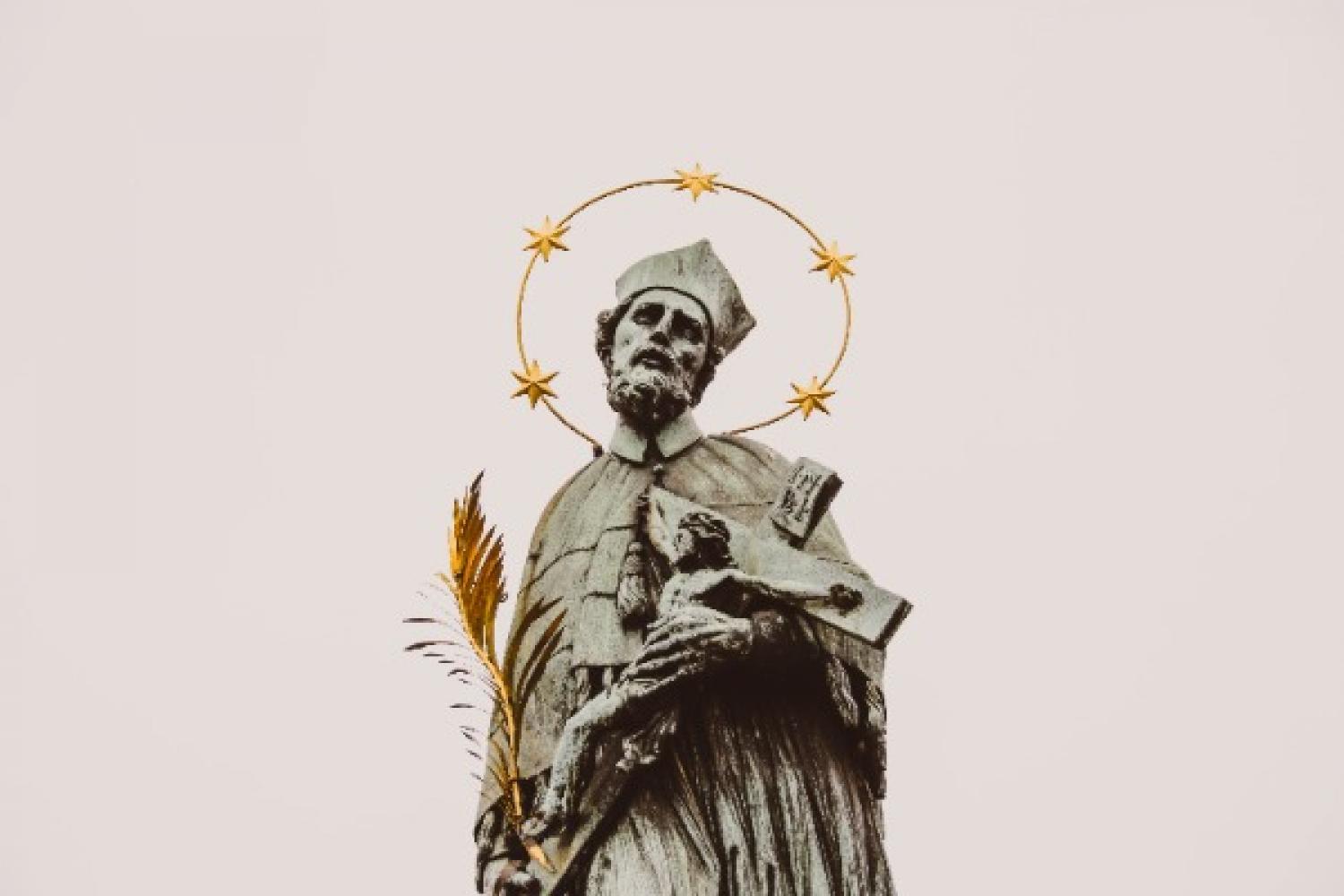
Spanning the Vltava River, Charles Bridge has served as a vital link to pedestrians in Prague – connecting the Castle and the Old Town – since its completion in the early fifteenth century. From its construction until 1841, Charles Bridge served as the only bridge spanning the Vltava. In addition to enduring centuries of a river prone to powerful floods and providing beautiful views of the city, Charles Bridge is known for the thirty statues of saints that line its balustrades.
While the baroque statues of Charles Bridge depict a variety of saints and scenes from the life of Christ, two saints on the bridge bear particular importance to the Czech people. St. Wenceslaus served as Duke of Bohemia in the tenth century, standing as an icon of a godly ruler. St. John of Nepomuk was martyred in the fourteenth century, standing against the demands of a cruel ruler.
St. Wenceslaus is depicted twice on the bridge. In one instance, the saint is depicted standing alone, dressed in the regalia of the Duke of Bohemia, with his hands folded and eyes looking up in prayer. In another instance, St. Wenceslaus is depicted standing with Sts. Norbert and Sigismund, again dressed as royalty, one hand resting on his sheathed sword and the other on his chest, with his eyes to heaven. St. Wenceslaus served as Duke of Bohemia from 921 until his death (which occurred between 930 and 935). His reputation as a just and faithful ruler contributed to his veneration, and his assassination at the hands of his brother Boleslaus (and Boleslaus’ allies) for both religious and political motives has been considered by the Church an act of martyrdom. Although never a king in his lifetime, Holy Roman Emperor Otto I gave him the title “King” decades after his death. Years after Wenceslaus’ death, Boleslaus converted to Christianity and brought Wenceslaus' relics into St. Vitus Cathedral.
St. John of Nepomuk, who with St. Wenceslaus shares patronage of Bohemia, is depicted in a statue on Charles Bridge holding a golden palm and wearing a golden halo – in fact, the statue stands on the site of his martyrdom. St. John of Nepomuk was put to death by the ironically-named King Wenceslaus IV, both for saying “only he who rules well is worthy of the name king” and for refusing to violate the seal of the confessional. In response to St. John’s fidelity, the king ordered him thrown from the side of the still-unfinished bridge into the Vltava and drowned. Chroniclers report that St. John served as the queen’s confessor, and that the king demanded St. John reveal to him whether his suspicions that the queen was having an affair were true.
Vaclav Havel, hero of the Velvet Revolution and later President of Czechoslovakia, said that Europe had become "the first atheist civilization" and had "lost its connection with the infinite and with eternity." Wenceslaus and Nepomuk, co-patrons of Bohemia, show political power at its best and its worst. Joined by a cadre of saints, they stand vigil on a bridge that has become an icon of the city of Prague and the Czech people, spanning the currents of centuries as a promise of endurance and the presence of the transcendent in a city in which so many have lost the faith.

The First Draught
To receive the Weekly Update in your inbox every week, along with our weekly Lectio Brevis providing insights into upcoming Mass readings, subscribe to The First Draught.

